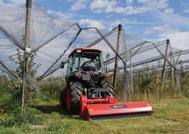Midland Farmer

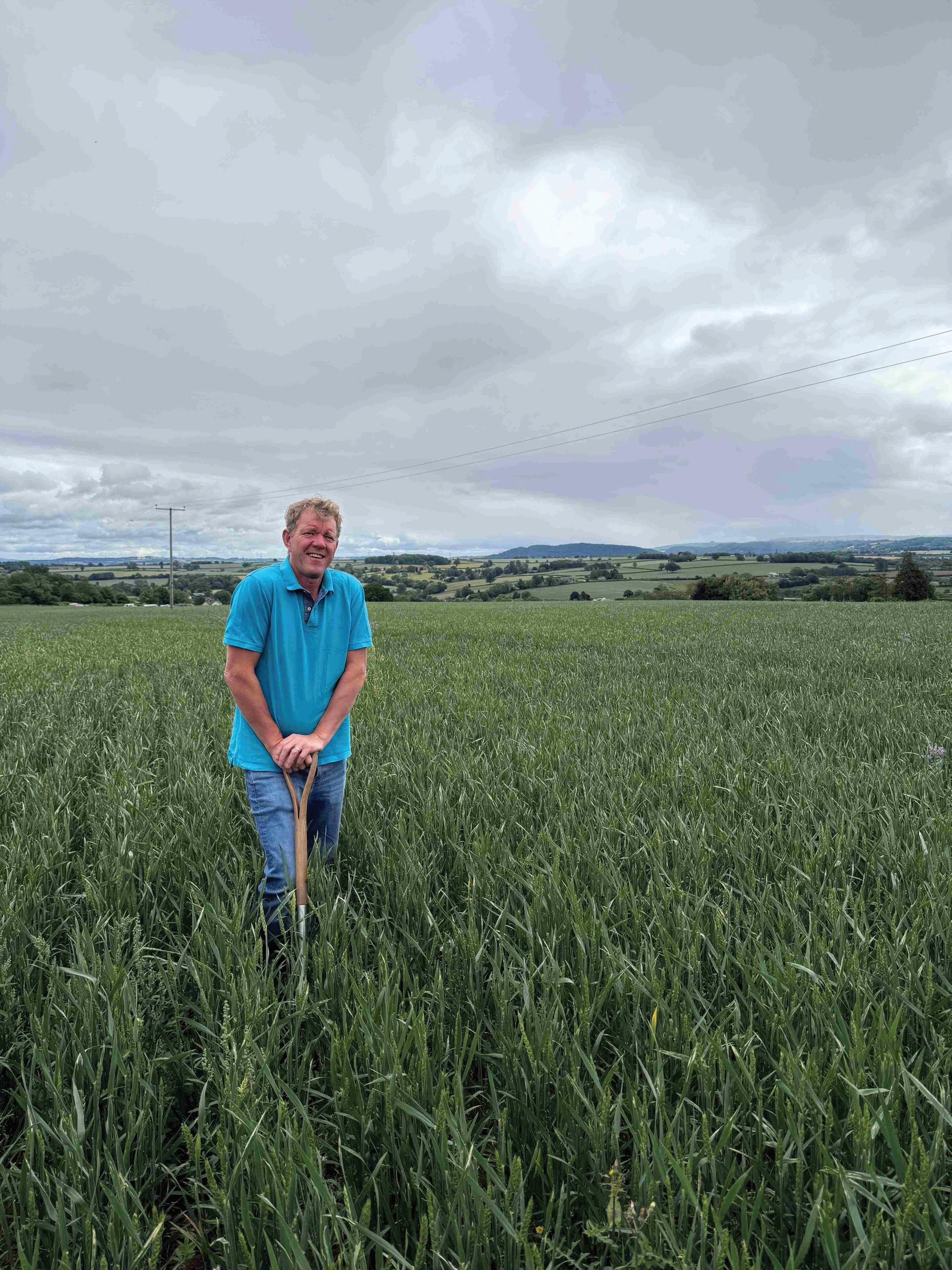































EDITORIAL
Editor:
Johann Tasker | T: 07967 634971
E: johann@ruralcity.co.uk
Design:
Mark Shreeve | T: 01502 725839
E: mark.shreeve@micropress.co.uk
Advertisement production:
Polly Coleman | T: 01502 725841
E: polly.coleman@micropress.co.uk
Gemma Mathers | T: 01502 725813
E: gemma.mathers@micropress.co.uk
Callum Hoffman | T: 01502 725840
E: callum.hoffman@micropress.co.uk
ADVERTISING SALES
Danny Lewis | T: 01502 725862
E: danny.lewis@micropress.co.uk
Harvey Taylor | T: 01502 725804
E: harvey.taylor@micropress.co.uk
Lawrence Kenny | T: 01502 725860
E: Lawrence.kenny@micropress.co.uk
Midland Farmer is a controlled circulation magazine published monthly for farmers and growers in the Midlands (Derbyshire, Herefordshire, Leicestershire, Lincolnshire, Northamptonshire, Nottinghamshire, Shropshire, Staffordshire, Warwickshire, West Midlands and Worcestershire) or companies supplying goods and services to the sector. To be included on the circulation list, a farmer must have a minimum of 70 acres of land, or 50 dairy/beef stock, or 50 breeding sows/250 growing stock, or 15,000 laying hens/broiler chickens. Intensive horticulture units are required to have a minimum of two hectares.
If you no longer wish to receive this magazine, please email your name, address and postcode as it appears on the wrapper to gemma.mathers@micropress.co.uk
© Countrywide Publications 2024
Published by Countrywide Publications, Fountain Way, Reydon Business Park, Reydon Suffolk IP18 6DH T: 01502 725800
Printed by Micropress Printers Ltd T: 01502 725800
At a time when the government claims to champion a resilient, sustainable food system, its inheritance tax reform proposals risk undermining the very foundation of that vision: Britain’s family farms.
Draft legislation, due to take effect in April 2026, would see a 20% inheritance tax levied on farming assets worth over £1 million. Ministers say the move is aimed at curbing tax avoidance by wealthy individuals buying farmland.
But the policy doesn’t just miss the mark—it hits entirely the wrong target. As the NFU rightly warns, the measure would not deter speculative buyers. Instead, it places long-established farm businesses—many of which have been in families for generations—under financial threat.
These are not absentee landowners seeking tax shelters. They are working farmers whose wealth is bound up in the land, the machinery, and the legacy they intend to pass on.
Strip that away, and you don’t just fracture a family business – you jeopardise a domestic food system already under strain.
There is a credible alternative on the table. The NFU’s proposed ‘clawback’ mechanism would allow the Treasury to recover tax revenue if land

is sold for non-agricultural purposes within a set period. It targets speculative gain without punishing active producers.
So why isn’t the government listening?
The refusal of Chancellor Rachel Reeves to meet farming representatives to discuss the issue is both baffling and deeply worrying.
Food security is, as the government itself has said, national security. But the mixed messages coming out of Downing Street are stark.
On one hand, government ministers promote the ‘Good Food Cycle’, talking up collaboration and sustainability. On the other, they press ahead with a policy that could uproot the very people delivering that vision.
If this government is serious about building a food system for the future, it must show it is willing to listen now. Agriculture cannot be an afterthought. The backbone of the countryside— our farmers—deserve fair, workable policy. There is still time to rethink this tax. The question is whether ministers have the political will to do so before irreversible damage is done.
Johann Tasker Editor









• Tax ‘betrayal’ of farming families
• Government unveils fi nance bill
• Ministers refuse to discuss plan
Industry leaders have again warned that imposing inheritance tax on farming families will fail to achieve the government’s aims.
The NFU issued the warning as the government laid out draft legislation for its finance bill – including plans to levy 20% inheritance tax on farming assets worth more than £1 million from April 2026.

NFU president Tom Bradshaw urged the government to look again at the union’s alternative solution he says would prevent farmers from becoming “collateral damage” from the planned reforms.
farmland to avoid inheritance tax. Neither would it generate as much revenue as it should, he said.
On the other hand, the NFU’s clawback solution would allow the Treasury to raise the revenue it seeks without tearing apart farming families or jeopardising domestic food production, said Mr Bradshaw.
ing the government’s own – had called on Chancellor Rachel Reeves to reverse her plan. So too had county councils, businesses and more than 250,000 members of the public.


‘Clawback solution’




The current policy would fail to achieve the government’s intention to stop wealthy people from buying







F“At the heart of this battle are the elderly farmers who have devoted their entire lives to growing food for the country and supporting their rural communities. They should not become collateral damage.
“Despite our persistent efforts, Chancellor Rachel Reeves still refuses to meet us,” said Mr Bradshaw. “When you undermine farm businesses, you undermine a vital part of our national infrastructure.”







arm minister Daniel Zeichner has unveiled the next stage of the government’s food strategy – including plans for a sustainable supply chain.
The Good Food Cycle aims to encourage healthier diets in a way which works for consumers as well as producers. It includes a 10-point plan drawn up with industry representatives and consumer groups.
Mr Zeichner said: “Food security is national security – we need a resilient food system that can weather any storm while ensuring families across the country can access affordable, healthy food.”
The government’s goal was a food system which would help the businesses that feed our nation to grow and thrive, said Mr Zeichner. This would mean more jobs and stronger local economies, while making it easier for families to eat and feel better.
“To see them face such uncertainty, knowing the legacy they and their families have worked hard for and grown could be ripped away by this tax, is heartbreaking.

“I cannot begin to imagine the fear many must be feeling right now – their homes, their livelihoods and eve-




“We cannot stand by and watch
“To ignore the consequences this tax will bring would be a betrayal of the very people who feed our nation. We cannot stand by and watch the backbone of the countryside be broken when there is a credible alternative being offered.
“This is a moment that demands

Tom Bradshaw: farms could be ‘ripped away’ from families The food
and that a thriving, profitable farming industry is critical to delivering this.”

The site itself had a high pressure gas main running through the middle of it which we had to cross a couple of times.
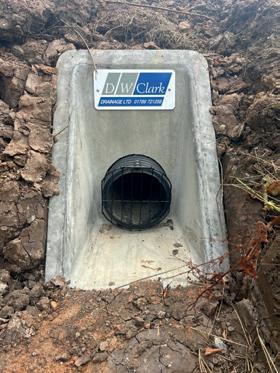

Besides the drainage a new ditch was cut, intake silt traps and new culvert pipes installed.
July was an extremely busy month for us. Around 80 acres of land drainage, numerous irrigation pipe repairs and fixing of domestic water leaks!
The 80 acres had around 300 metres of 9” (225mm) mains with 160mm sub mains and 80mm laterals.

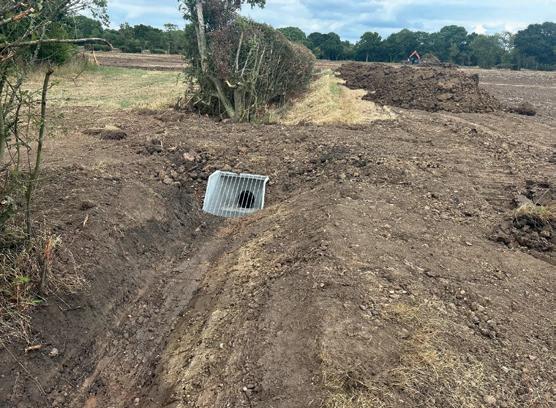

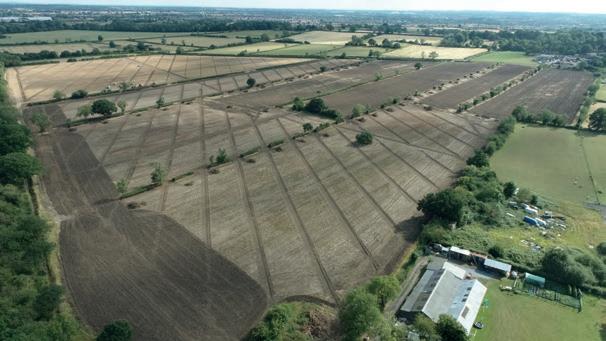

Aerial view of the whole site. The client was eager to start

•
•
•
•

•
•


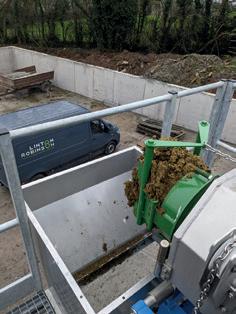




















































• Planning applications for residential, commercial, industrial, and agricultural projects
• Pre-application and general planning advice
• Discharge of conditions
• Objection letters (where justified)
• Planning appeals
• Permitted development guidance
• Planning appraisals
• Lawful development certificate applications
• Section 106 negotiations
• Development plan representations
• Speaking at Planning Committee
























Some 10% of the UK winter barley area was harvested by 9 July, suggests the Agriculture and Horticulture Development Board. This compares with 7% at the same time last year and a five-year average of 6% complete.
Early-cut winter barley and oilseed rape have yielded reasonably well in places – despite blistering heat and near-total lack of rain during May and June – offering a glimmer of hope after a season that tested nerves and stretched resources.
But that hope is tempered by significant inconsistencies. While some growers report winter barley yielding above the five-year average at 9t/ha, it’s a very different story for others seeing less than 5t/ha on lighter land – with crops typically performing better on heavier clays than on sandier soils.
It’s a similar story for winter wheat. But winter oilseed rape appears to be faring surprisingly
lots of ladybirds.”
The biggest challenge for many growers came last month when rain finally arrived but in the form of torrential downpours.
With combines confined to barracks for days on end, farmers went from praying for rain to fearing what would happen next.
Agronomists point to improved genetics and targeted agronomy as crucial in getting crops over the line – a reminder of how much resilience is now bred into modern varieties in a big to combat climate extremes.
Grain quality is another mixed bag. Hagbergs and proteins in milling wheat have held up, but concerns are rising about sprouting in crops yet to be harvested – and that accounts for the majority on many farms.
Looking ahead, many growers say 2025 will be remembered not as an overall disaster or a success, but for its contrasts. With adjacent fields performing very differently, this harvest is one of extremes rather than one of averages.
rowers will be offered a credit of £100 per bag of seed from Bayer for oilseed rape establishment failures
The Dekalb Establishment Scheme for 2025 covers highperformance hybrid oilseed rape varieties DK Excentric,DK Extremus, DK Excited, DK Exstar and clubroot-resistant DMH585.
Bayer campaign manager Richard Phillips says: “Should cabbage stem flea beetle or other oilseed rape crop establishment pressures prove too much this autumn, we will be on hand.”
Growers can claim for total establishment failure of blocks of 6ha or more – either as whole fields or as single uninterrupted blocks within larger fields.
Registration is simple and free , says Mr Phillips. The rules of engagement state that seed must be purchased through a participating seed supplier and crops sown using normal good practice before 20 September 2025.
The closing date for registration is 30 September and claim forms must be completed and submitted via the seed supplier by 31 October. For full details, growers should speak with their seed supplier when purchasing seed.
For those growing an eligible variety, joining the Dekalb Establishment Scheme is a nobrainer, says United Oilseeds seed manager Beckii Gibbs.
“Why wouldn’t you join? You have nothing to lose from taking advantage of the scheme; it’s without doubt a useful tool in managing the risk of oilseed rape establishment failure and it can add a little bit of confidence.”
Growers of specialist HOLL oil variety V367OL should contact their supplier directly for information on the parallel HOLL-specific Establishment Scheme. Claims made under this scheme must be submitted by 15 September 2025.
Tyre pressures are critical if you want to get the best from your tractor, trailer or towed implement.
TractAir’s PTG Central Tyre Pressure control system will save you fuel, minimise ground compaction and reduce tyre wear by allowing you to maintain the correct tyre pressures for varying loads, field conditions and speeds.
As tractors and trailers get heavier and travel at higher speeds, efficient braking is becoming more important.



Tractair Air Brake Systems deliver the powerful, controllable fail-safe braking that is required by modern road safety laws and regulations.


To find out more about CTIS and Air Brake Systems visit the website below.
Carbon emissions from wheat production can be halved, suggest trials by growers supplying grain to Weetabix.
The Lower Carbon Wheat Project was conducted on behalf of the Weetabix Grower’s Group, a collective of over 120 local farmers who grow 75,000 tonnes of wheat annually within 50 miles of the breakfast cereal maker’s mills.
Reducing emissions in wheat production is seen as a critical step in reducing the overall carbon footprint of Weetabix’s largest single ingredient. The trial was undertaken by six farmers from the group.
Results were shared with the rest of the group during a recent farm walk attended by 47 growers and members of the Weetabix team, who worked closely with Map of Ag and European Food and Farming Partnerships.
Host farmer Duncan Farrington said he had achieved a 20% reduction in synthetic nitrogen use in three years by using cover crops, natural manures, and molasses-based biologicals to replenish soil nutrients.
Artifical nitrogen is the largest carbon contributor to greenhouse gas emissions at Mr Farrington’s farm at Hargrave, Northamptonshire. But it is now able to produce wheat with half its usual carbon footprint.
Weetabix Food Company managing
“This lower carbon wheat project is a game-changer, not just for Weetabix but for the wider food industry and the future of sustainable agriculture in the UK. Doing the right thing isn’t just a ‘nice to have’ - it also makes commercial sense.”
A farmer-led approach was vital to the success of the project, said Mr O’Dwyer. Weetabix’s promise to source all its wheat from within 50-miles of its mills was part of the
“Making sure that the pilot scheme reflects the diversity of farming, soil types and climate conditions amongst growers is essential to scale the project
King Charles granted Weetabix a royal warrant earlier this year. The company has now been recognised by three generations of the Royal
It said it remained committed to helping the nation start its day in a




The JCB Folding Grass Forks are perfect for the handling of silage or any loose material. Extensively tested to ensure efficiency and productivity and maximised for your machine, available in 12ft, 14ft and 16ft wide models. Scan the QR code for more information and to request a price.
• Blackgrass now emerging later
• Implications for cultural control
• Spray sequences are important
The later and more protracted emergence of blackgrass is prompting a shift in control strategies.
Continued use of successful management strategies for blackgrass control developed by agronomy company Hutchinsons is starting to lead to a shift in population dynamics, says technical manager Dick Neale.
“Growers have been using the tactics we proposed at our Brampton site of stale seedbeds through September, shallow tillage, sprayed off with glyphosate, delaying drilling until at least 15 October for the past 10 years.
“We are now dealing with a blackgrass population that is 10-fold fewer, so maybe only 40-50 plants compared with 400-500 plants per square meter – but one where those 40-50 plants are emerging between the beginning of October and Christmas.”
To test that theory, Hutchinsons sprayed small plots of its new blackgrass demonstration site in
Blackgrass emergence is happening later
“You’ll get a much better result

of sequences rather than large single stacks of pre-emergence herbicides.
“We have selected for a population that is emerging in October more than in September – so when you are using stale seedbeds make an effort to observe what is happening.
“If it has rained in September and you know blackgrass should be emerging and it’s not – make a note of that, as it is telling you something.”
plants more apparent in relative terms, but it shouldn’t distract from the vital role of controlling the largest part of the population.”
Blackgrass control has been above average this year, helped by delayed drilling caused by torrential rain in mid-September and then excellent conditions for residual herbicides to work when drilling could proceed in late October and November.

This means the lower effectiveness of stale seedbeds might be less of a problem than in other years. That doesn’t mean not to continue using the technique or glyphosate predrilling, but it could mean that adding glyphosate to pre-emergence sprays is the more effective timing.
With more protracted blackgrass emergence, Mr Neale suggests residual herbicide sequences are becoming even
“We’ve seen it in our trials for the past five seasons – sequences are outperforming single applications significantly,” he says.
Herbicidal activity from single pre-emergence applications will have degraded and diminished, so any blackgrass emerging more than 30 days after application will be at risk of not being controlled adequately, Mr
>> Sequencing doesn’t have to mean spending much, if any, more on herbicides, though, he stresses.
“We showed clearly in our trials this year that you can take the same amount of money and by splitting it, you’ll get a much better result than trying to second-guess the exact timing for one application.”
Some products must be used at pre-emergence for crop safety or label approval reasons, while others are more effective and should be prioritised for use at that timing.
“Cinmethylin, for example, is very much a seed and root uptake product, so it needs to pre-emergence of blackgrass to get the best from it.”
Avadex Factor (tri-allate) and aclonifen must be used pre-emergence of the crop.
In contrast, metribuzin, in combination with flufenacet and diflufenican, and Isoflex (bixlozone) products have a particular strength in controlling blackgrass that is just emerging.
These products are therefore believed to be potentially better
suited to a peri-emergence or early post-emergence second application.
Drilling date and weather should also influence decision-making regarding sequencing, with dry conditions potentially indicating the need to split the pre-emergence spray into two applications.
“While for 15 October drilling dates I might apply Avadex (Factor) and cinmethylin together at preemergence, for those earlier drilled crops in drier conditions I might sit on the cinmethylin for maybe another 10 days after drilling to wait for wetter and/or cooler weather.”
Weather conditions and farm setup play an important role in determining whether to use the granular Avadex Excel or liquid Avadex Factor formulations of tri-allate, rather than just focusing on which one delivers the most active ingredient, according to Dr Smith.
“Both formulations have different strengths,” he says.
Overall, in trials, Avadex Excel has the edge over the Avadex Factor formulation, says Dr Smith. “But the


Autumn germination peak is becoming less pronounced, says Will Smith
average hides a lot of detail; in some trials, one has the advantage, in others it’s the other.”
For example, in autumn 2023, Avadex Factor performed on par with or better than its competitors in virtually every single trial, primarily due to drilling conditions.
On some farms, Avadex Factor might be the best option, particularly where sprayer capacity and labour availability allow for pre-emergence herbicides within 48 hours of drilling.
Where farmers have access to an Avadex Excel applicator or a reliable local contractor, applications of Avadex Excel may make most sense.
Whichever formulation is used, Avadex has been a consistent base to residual herbicide programmes.
“Every year, we see a 15-20% uplift in blackgrass control where Avadex is used as part of the programme compared with where it isn’t.
“It’s very consistent regardless of the overall control level of the programme, including where newer chemistry such as cinmethylin is used,” says Dr Smith.





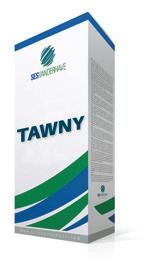






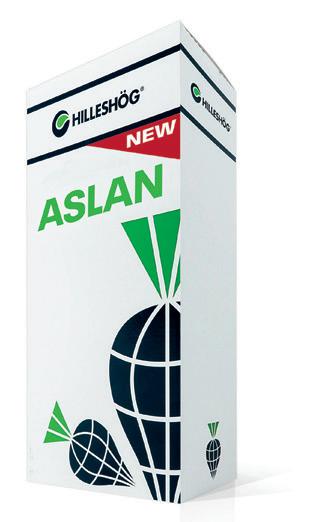


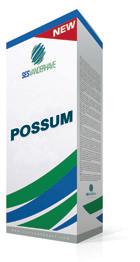




Britain’s growers have embraced changes to sugar beet seed purchasing arrangements, says global sugar beet breeder SESVanderHave.
Since 2024, farmers can purchase sugar beet seed direct from plant breeders, as well as from British Sugar.
“We launched our campaign to supply growers direct for the 2026 sowing at the 2025 Cereals event,” said Ian Munnery, UK director for SESVanderHave (pictured).
“We have been overwhelmed by the response. The orders exceeded our expectations and more orders have been placed.”
Growers visiting the SESVanderHave stand at Cereals this summer were asked what benefits they believed buying direct from offered. Reasons included decisions based on service, quality and cost.
Advice and back-up scored highly with farmers. Respondents mentioned the "comprehensive support"when
buying direct. They also valued ‘dealing with experienced sugar beet experts and ‘customer support’.
“Such comments endorse the value of the investment we’ve made in people and training,” said Mr Munnery.
Choice and access to the latest varieties were rated highly too – alongside freedom of choice and access to the latest varieties.

Seed quality matters. One long-standing customer noted: “Their seed always germinates and produces a good yield.”
Buying direct ensures growers receive fresh seed, said Mr Munnery. The varieties we supply for 2026 will be harvested during 2025. And as seed is processed in our facilities growers enjoy more choice on seed treatments and pelleting.”
Economics influence growers’ decisions. Sev-
eral farmers described the SESVanderHave offer as competitive and cost effective.
“These responses confirm that UK sugar beet growers welcome a fresh way to source seed,” said Mr Munnery. “Currently, SESVanderHave is looking to even more improvements in in our breeding pipeline.”
SESVanderHave varieties for 2026 include the recently launched Possum, Pintail, Patridge, Grouse and Snipe which offer early access to the latest, most promising varieties with innovative genetics. These join Antler, Aslan, Hoopoe and Gadwall which all proved successful in 2025, their first commercial year of use.
SESVanderHave has an online webshop where growers can provisionally secure varieties for 2026 before a contract price announcement from British Sugar & NFU Sugar. This can be found at https://eshop.sesvanderhave. com/uk/
Alternatively, the SESVanderHave team is available on 01522 442000 offering growers expert advice on the best variety for particular locations and soil type.




Ainter-row hoeing on an arable farm operating the latest Fendt tractors with VarioGuide RTK.
Accurate to +/-2cm, the system on the 942 Vario is used to direct drill cereal crops in bands with a 6m Claydon Evolution, while that on the 724 Vario guides a 6m Claydon TerraBlade which is steered automatically using the tractor’s front wheels.

binable, band-sown crops.

““VarioGuide RTK takes inter-row hoeing to the next level and this season we used it on over 150ha, with higher output and improved weed control,” says Claydon Drill founder and Wickhambrook farmer Jeff Claydon.
Peace of mind
“Compared with cereals drilled on narrow/conventional row spacings the 17cm banded rows at 32cm centres provided plenty of tolerance and gave us peace of mind that the crop would not be damaged.”
With weeds becoming increasingly resistant to herbicides and little new chemistry on the horizon the TerraBlade provides a low-cost, mechanical method of controlling them in com-
All cereal crops are virtually weed-free
It is popular with farmers wanting to operate more effectively and efficiently, while organic and regenerative farmers also use it to reduce weed burdens and costs.
Keeping the area between the seeded bands clear of weeds during the early stages of crop growth reduces competition for nutrients, light, air and water, so young plants grow strong and healthy.
A relatively dry early April provided ideal conditions for the TerraBlade. Operating 1cm to 2cm deep, the standard 150mm-wide scalping blades sliced through the soil removing weeds between the seeded bands but leaving the crop intact.
Operating at up to 12km/h, depending on field and soil conditions, it averaged 6-7ha/hr, almost double the previous figure, and caused no damage, even at Growth Stage 32, says Mr Claydon.
All cereal crops on the Claydon farm are virtually weed-free, and
the shallow soil mulch created by the blades helped to retain moisture.
Trials by a major agronomy company on another farm where grassweeds had become problematic after years of conventional crop establishment measured over 900 blackgrass seeds heads/m2 in an untreated area. Where herbicides were used in combination with a Claydon Straw Harrow and a Claydon TerraBlade researchers recorded just 13/m2, a 98.5% reduction. This gave a yield increase worth £256/ha, which quickly covered the implement’s cost.
Designed to work in direct drilled cereal crops established using Claydon trailed and mounted direct drills, the TerraBlade costs approximately £2000-£2500 per metre, a fraction that of more complex hoes.
Available in widths to match Claydon drills, the TerraBlade’s simple design means that there is little to maintain.





Oilseed rape growers moving on from HEAR varieties are being encouraged to consider growing a Clearfield variety instead.
Volunteers rape plants left from HEAR varieties could see high levels of erucic acid in following crops –limiting their marketability, says Sarah Hawthorne of DSV UK.
A Clearfield variety is the perfect opportunity for cleaning up such crops, she adds.
Weed control
“Clearfield technology, based on a combination of Imazamox herbicide and oilseed rape varieties tolerant to it, has proved highly beneficial to oilseed rape growers in recent years offering effective control of pernicious brassica weeds.
“The system has provided reliable control of problem weeds such as charlock, runch and hedge mustard but has also opened up significant management opportunities for many growers in recent years including reducing erucic acid levels at harvest.
“With HEAR varieties becoming increasingly unpopular, growing a Clearfield variety could help reduce unwanted volunteers in following seasons that otherwise would be very difficult to control.”
All three Clearfield varieties on the 2024/25 Recommended List are now from DSV. All offering yields


says Sarah Hawthorne






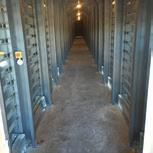





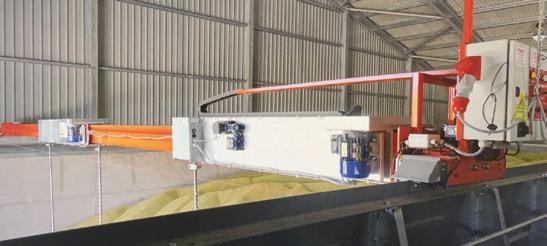



























Yellow water traps are helping growers win the battle against cabbage stem flea beetle in oilseed rape.
Flea beetle was not much in evidence in MagicTraps deployed last autumn by farm manager Jake Freestone. Trap counts were low in what was generally a low pressure season for the oilseed rape pest in most regions.
Mr Freestone deployed two digital traps, which were part of the United Oilseeds MagicTrap network. They were placed on different soil types and in different areas of Overbury Farm, which sits on the Herefordshire/ Worcestershire border.
Sporadic problem
Flea beetle has been a sporadic problem at Overbury since neonicotinoid seed treatments were banned in 2013. Despite flea beetle challenge, rape has retained its place in the rotation on the

farm, although the area has dropped.
“We’re combining about 1100ha [of arable crops] here and on the farm next door and probably 200ha would traditionally have been rapeseed,” says Mr Freestone.
“I have persevered with it, although for one reason and another the area had slipped back a little this year but that was mainly down to rotation and we’re due to go back up again this year.”
With agronomy based on integrated pest management, a key aim is to avoid using synthetic insecticides where possible. No insecticides have been used on the farm since 2018, which uses cultural methods to avoid them.
Land going into rape receives an application of poultry litter after the crop is direct drilled into chopped straw and a decent stubble. Companion

MOBILE FEED MILLING AND MIXING SERVICES FOR ALL BREEDS OF ANIMALS AND POULTRY




WE PROVIDE MOBILE FEED MILLING AND MIXING SERVICES FOR ALL BREEDS OF ANIMALS AND POULTRY, FROM STRAIGHT ROLLED CEREALS OR HAMMERMILLED PULSES TO COMPLETE MIXED RATIONS AND FEED BIN TRANSFERS.
With numerous suction and discharge options including directly into feed bins or separate bunkers, we are able to provide an efficient, traceable and consistently high standard of service for our customers. Based in the West Midlands we run a fleet of modern ‘Tropper’ machines specifically built


The magic traps help growers monitor pest pressure
Right: Growing rape is hard – but still possible, says Jake Freestone







Last season’s newcomer DK Excentric is in the variety line-up, alongside Dolphin. A shift in OSR drilling date has also been introduced as part of the farm’s approach to flea beetle management.
“We have started drilling very early, in the first week of August to try and get the rape up and a leaf established before the main flea beetle migration at the end of August,” says Mr Freestone.
“We had pretty good establishment last autumn and flea beetle weren’t really an issue,” he adds. “We did have some winter stem larval damage, but the crops seemed to grow through that.”
Mr Freestone initially placed the MagicTraps in fields with rape stubble and a cover crop, before moving them into new season crops three weeks after drilling.
“My aim was firstly to get used to the technology and secondly, to have a look at what was emerging from previous oilseed rape fields to try and get a gauge on cabbage stem flea pressure, but there wasn’t much pressure at all.”
Setting up and using the two MagicTraps was straightforward, although one consideration was dealing with a patchy mobile phone signal.
“I was trying to find a place in the field where I thought the beetle were likely to land – so in the field margins, and also somewhere we could get a signal as well.
“I found I’d get a signal one day, and then the next day the signal had disappeared,” says Mr Freestone.
“We’ve started drilling very early
“That’s not a particular issue with MagicTrap, it’s a rural issue across the board.”
With no insecticides applied on the farm, Mr Freestone says he is not using MagicTrap to inform spraying decisions, instead the benefit comes in the form of saving time on crop walking. It also provides a record of what is happening with flea beetle.
“The fact that MagicTrap is recording a digital footprint means that over time we will hopefully be able to build up a picture of what sort of populations we have, in what fields and in what kind of weather.”
Following the successful rollout of the United Oilseeds MagicTrap network last year, the aim is to continue to build on the current 48trap network, says Peter Collier, United Oilseeds’ area manager for the East Anglia region.
Last year’s results have helped inform MagicTrap field positioning, timing and best practice. With more growers and more traps, wider coverage will mean an even more scientific approach, says Mr Collier.




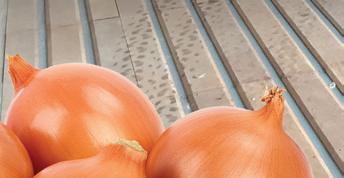







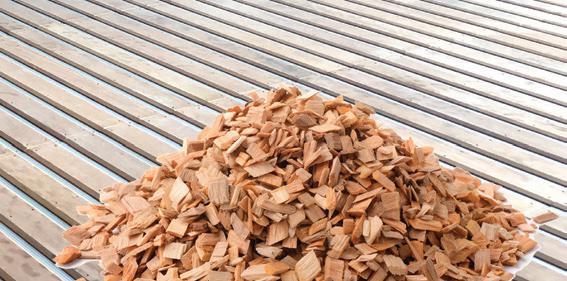




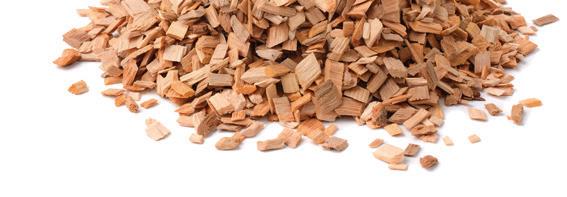



• Valuable revenue this season
• Consider agronomic benefits
• But remember downsides too
Arable growers should think carefully when considering whether to bale and remove straw from fields this summer.
High prices for wheat and barley straw mean baling could make financial sense for arable farmers with easy access to markets. There are good agronomic reasons as well. But downsides should be considered too.
Benefits include aiding direct drilling, reducing slug pressure, and reducing the immobilisation of nitrogen where white straw residues build up, says Rob Jewers, fertiliser and crop nutrition specialist for Hutchinsons.
Such benefits must be weighed against other factors, says Mr Jewers.
These factors include compaction from increased traffic, any impact that the timely removal of straw will have on establishing following crops, and the impact of lost organic matter on soil health and structure.
Another important consideration is the value of key nutrients removed within the straw, principally phosphate and potash, as outlined by the AHDB Nutrient Management Guide (RB209).

The guide suggests that removing straw associated with

a 10t/ha wheat crop removes 5kg/ha of phosphate and 50kg/ha of potash. Meanwhile, straw from an 8t/ha winter barley crop is worth 4kg/ha of phosphate and 40kg/ha of potash.
“The potash content of straw can vary substantially depending on the amount of water availability during crop maturity and straw baling. It can be worthwhile to determine the nutrient content of representative straw samples by laboratory analysis.”
If growers do decide to bale, Mr Jewers says some of the money made from straw sales should be reinvested back into replacing the nutrition removed.
“Phosphate fertiliser is usually best applied to seedbeds ahead of, or at planting,” he advises. This is often as organic manure applications, or broadcast in traditional fertilisers, such as DAP and TSP.

But microgranular or liquid placement fertilisers are increasingly popular, and can deliver significant benefits to rooting and early crop vigour, says Mr Jewers.
“Placement fertilisers applied in much smaller, concentrated quantities than traditional fertilisers are highly efficient and cost effective.”
Trials at Hutchinsons’ Helix East Anglia farm showed yield responses of 0.8 t/ha and 0.6 t/ha from the placement fertilisers Crystal Green and Primary-P over an untreated control in 2022.

Crops usually require large amounts of potassium through the season for optimum growth – potentially more than 300kg/ha in a high yielding crop. But uptake usually peaks during late flowering – before much of the potassium is returned to the soil as crops senesce.
“In order to maintain an adequate supply of potassium through the peak uptake period, the soil needs to be able to store and release exchangeable potassium into the soil solution. A good measure of the soil’s ability to do this is its cation exchange capacity.”
Clay and organic matter content have a significant impact on soil CEC, adds Mr Jewers.
Big bale hay, barley and straw prices (ex farm) 13 July 20225
Source: AHDB / British Hay & Straw Merchants Association
“A soil with over 5% organic matter, or over 5% clay, will lose little K to leaching, whereas a sandy soil with low CEC will see potassium move down the soil profile with excess rainfall.
“Soils with low indices and low CEC should have potassium applied annually. This should be in spring before peak uptake by the plant.”
To fully understand the phosphate and potash requirements of your soils, Mr Jewers recommends carrying out an in-depth soil analysis. Options includes the Gold Healthy Soils test, or Terramap high definition scanning –see healthysoils.co.uk.









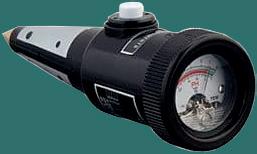



• Assess soil acidity in every field
• Measure for nutrient availability
• Remember: test for sulphur too
Growers are being reminded to test soil ahead of next season to ensure crops can meet their full potential.
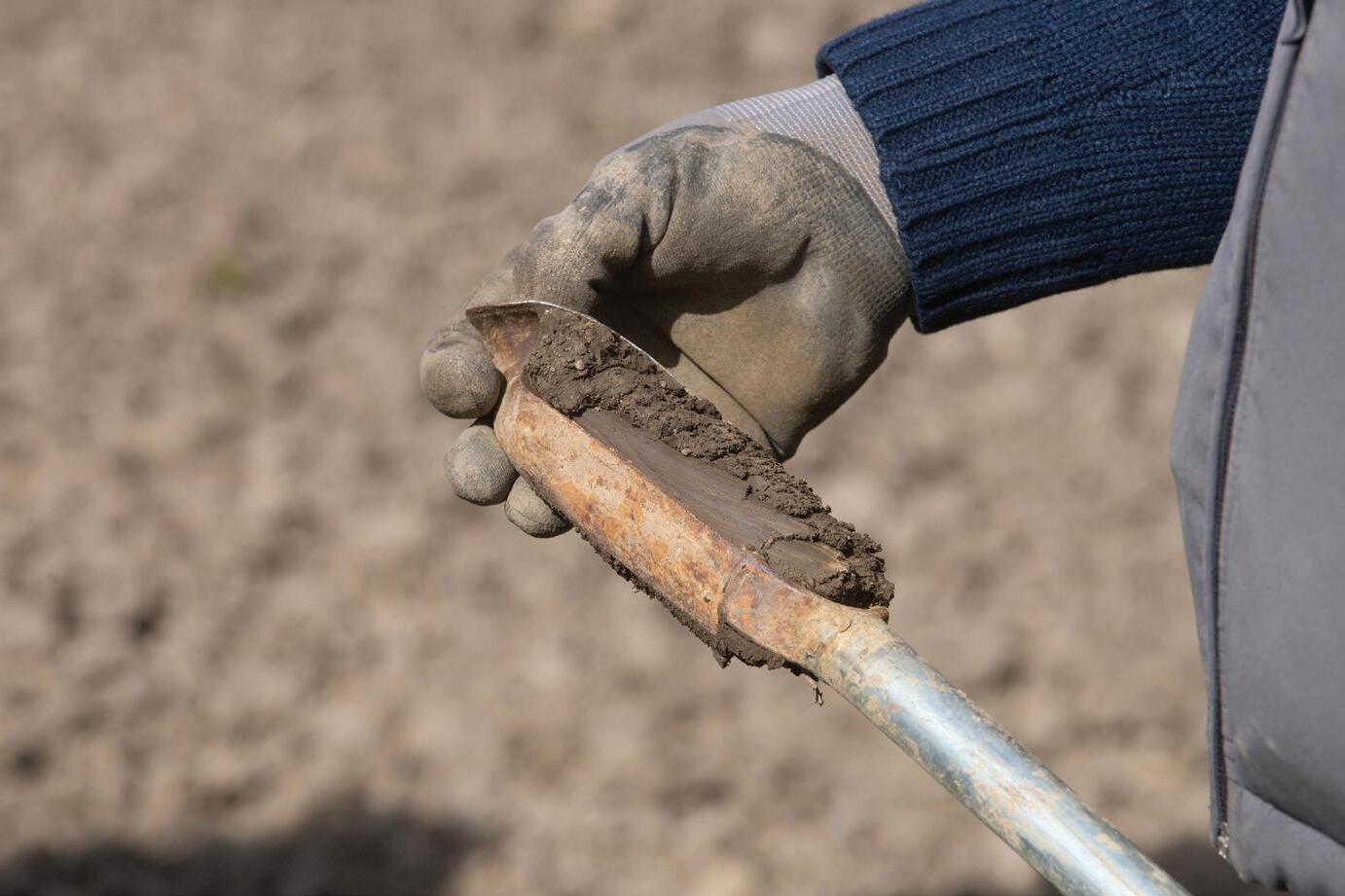
Testing for acidity and nutrient availability could help offset a potential rise in fertiliser costs by ensuring growers apply what is needed in the right place, believes Phil Burrell, plant health business manager for ProCam.
“As one cropping cycle comes to an end, and growers start to get ready to drill next year’s crops, now is the ideal time to test soils, not just for pH, but also for residual reserves of nitrogen, phosphate, potash and sulphur.”
Optimal level
The fundamental factor to get right at this stage in proceedings is to ensure soil pH is as close to 6.5 as possible – the optimal level for the availability of micro and macro nutrients, says Mr Burrell.
“If soil pH falls below 6.5, meaning soils are too acidic, macronutrients such as phosphate, nitrogen and potassium will be locked up in the soil matrix and therefore be less available for uptake by the next crop in the rotation.”


Phosphate availability falls to 52% at pH 6.0, says Mr Burrell, decreasing to 48% at pH 5.5. Similarly, nitrogen and potassium availability fall to approximately 77% at pH 5.5, he adds.




mum pH of 6.0.
“Given the political unrest in the Middle East, and the impact this could have on global fertiliser prices, it makes sense to test and adjust pH now, to ensure those nutrients already in the ground remain available for the next round of crops to utilise.”
There’s no silver bullet when it comes to unlocking crop yield , says Mr Burrell.
But rectifying pH should be on every to-do list, especially as low pH can easily and costeffectively be resolved with lime.
Mr Burrell also urges growers to test for sulphur. “Sulphur and the efficiency of nitrogen are closely linked, with any deficiency in the former resulting in reduced nitrogen use efficiency,” he explains.
Atmospheric sulphur deposition has fallen steadily since the 1970s when acid rain was at its peak, with 95% of soils now deficient. At the same time, only 55% of arable ground routinely receives a treatment of sulphur.
“Many farmers assume the shortfall will be made up by applications of farmyard manure or slurry. But unless these inputs have been tested to assess their nutrient content, it’s impossible to know if soils are receiving sufficient sulphur.”
Growers should employ a three-pronged approach to get the best from crops, says Phil Burrell, from ProCam.
The first is to test soil for acidity and nutrient content on a field-by-field basis in autumn and spring so appropriate adjustments can be made ahead of cropping, he says.
Secondly, growers should also carry out in-season leaf/plant tissue analysis to assess the crop’s ongoing nutritional needs. Finally, they should carry out postharvest grain analysis to highlight any enduring nutrient deficiencies.
“Grain analysis from the 2024 harvest indicated that 60% of wheat crops were deficient in sulphur,” says Mr Burrell.
“This points to a significant shortfall in fertiliser programmes and is a clear indication that growers shouldn’t always assume that a ‘standard’ bag of fertiliser will be appropriate.”



Without enough sulphur, oilseed rape yields fall by an average of 0.5 t/ ha, while wheat yields fall by about
Instead, soils should be tested, and the results scrutinised with the help of a FACTS approved agronomist. They will be able to verify the findings and devise a suitable nutrient programme for each field, says Mr Burrell.



“According to the latest data, almost two-thirds (62%) of UK arable soils are below the optimum pH of 6.5. Likewise, one-in-three grassland soils are below their opti-








0.375t/ha.



To counter this, sulphur and nitrogen should be applied at a ratio of between 5:1 and 3:1 depending

on soil indices.


Soil testing is key to unlocking crop performance, says Phil Burrell.
“Fertiliser spreaders should also be calibrated to ensure what could become an increasingly expensive commodity is applied accurately and in the right quantity.
“Where the relevant machinery is available, variable rate application maps, such as those produced by ProCam’s FieldSense platform, should be used to maximise the yield benefit and margin over input costs.”
Three farmers championing soil health and regenerative practices were recognised in the 2025 Soil Farmer of the Year competition.
Jointly run by the Farm Carbon Toolkit and Innovation for Agriculture, the keenly contested award celebrates farmers across the UK who are leading the way in managing soil as a living resource.
Winner
First place Went to John Joseph, who manages 100ha of sandy loam soils at Trecorras Farm in Herefordshire. Mr Joseph was presented with the award at last month’s Groundswell event.
Judges said Mr Joseph had
reshaped the way soils are understood and managed on his farm. Key practices now include companion crops, a seven-year rotation which incorporates grassland into the arable system, 100% direct drilling and reduced inputs.
Competition judge Jade Prince, a soil specialist at competition cosponsor Hutchinsons, praised the way Mr Joseph had re-evaluated his business over the past decade with clarity of purpose and scalability.
“Every decision on John’s farm has a clear agronomic and economic rationale,” she said. “What stood out was his ability to link soil management to business viability, showing that good soil makes good business sense.”
Ensure compliance with your disinfectant procedure with no excuses for not following the rules.
Farm biosecurity is essential to preventing disease spread and safeguarding animal welfare, and Dofygate 3 o ers an innovative, robust solution. For high-risk sites like Pig and Poultry farms, maintaining strict access controls is crucial to avoid outbreaks of swine and bird flu. Dofygate 3 integrates seamlessly with your biosecurity protocols, controlling who enters your farm and ensuring adherence to hygiene measures.
Why Dofygate?
Dofygate 3 helps control access, guiding visitors and vehicles to follow site-specific biosecurity procedures. Dofygate is an easy-to-install, solarpowered barrier that makes a real di erence onsite with no more excuses for not following procedure.
Dofygate is equipped to handle various entry needs:
• For Farm Sta : Remote transmitters for fast access.
• For Visitors: A push button at the wash station or signing in book ensures all visitors follow disinfection steps, while clear signage reinforces biosecurity protocols.
• Procedure: Stop, Dip Feet, Wash Tyres, Sign In, Press Button
Built for Safety and Durability
Made in Norfolk with strong carbon fibrearms and an impact protection clutch, Dofygate 3 resets easily if bumped, minimizing downtime.
Dofygate installs without the need for trenching or extensive wiring, keeping costs low and setup quick. For ultimate mobility, try our Wheely Gate, perfect for temporary setups or simply fit to a post.
Protect your livestock, safeguard your site, and enhance biosecurity with Dofygate 3. After successful trials at several farms this year, we’re now being rolled out to many more - Call us to learn more about implementing this essential biosecurity measure on your farm.

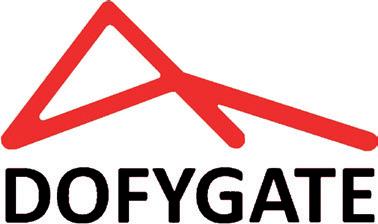

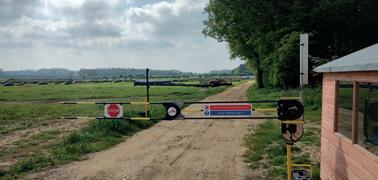





































Second place went to Jonathan Hodgson, who farms 285ha of clay soils in East Yorkshire. His system centres on strip tillage, companion cropping, cover crops, and integrated livestock, the elimination of seed dressings and insecticides.
“Jonathan’s approach to enterprise stacking was particularly inspiring,” said Ms Prince.
“From growing barley for his own distillery to producing dual-purpose flax and grazing sheep on cover crops, he is building diversity and resilience into both soil and business.”
Third place was awarded to Andrew Mahon, who manages 800ha of Hanslope clay in Bedfordshire.
Since 2015, Mr Mahon has shifted to a predominantly direct drill system, with shallow discing being used to establish small seeds.
He focuses on addressing localised compaction and increasing biological activity through targeted interventions.
Deborah Crossan, head of soils and natural resources at Innovation
for Agriculture, said Mr Mahon had pioneering on-farm applications of compost extract and biological feed at drilling.
“His attention to soil biology and microbial support is not just progressive, it’s proving highly effective in driving organic matter gains and establishment success.”
Each of the three winning farmers will host on-farm events to share their soil management strategies in action. These farm walks will offer valuable insights for fellow farmers looking to build soil resilience and cut input reliance.
“Seeing these systems on the ground is invaluable,” said Ms Crossan. “They demonstrate how different soil types, farming systems and business models can all benefit from a soil-first approach.”
Details about the farm walks will be announced via the Farm Carbon Toolkit and Innovation for Agriculture websites, newsletters and social media channels in the coming weeks.




















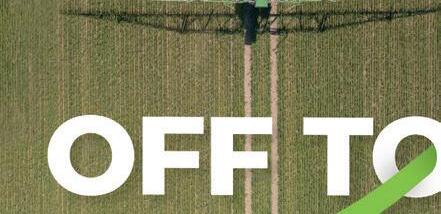


















Our innovative, low-carbon energy solutions help farms and agricultural businesses cut costs, reduce emissions and enhance energy security. Our CHP systems generate reliable heat and power using biogas, biomethane, natural gas, sewage gas, landfill, or hydrogen, maximising efficiency and sustainability for agriculture.






• Significant energy cost savings

• Integrated solutions with heat pumps and PV

• Power solutions from 20 to 2,500kW

• Flexible finance solutions




• 24/7 monitoring and service coverage










ACambridgeshire farmer has scooped a prestigious award for integrating arable production and nature to create a profitable business.
David Felce received the 2025 Rawcliffe Bridge Award for Sustainability at a special ceremony last month. The award was organised by BASF, in partnership with the Andersons Centre, Country Trust and Royal Entomological Society,
The competition was open to any grower implementing outstanding sustainable farming practices. Judges praised Mr Felce for his collaboration, biodiversity income streams and impeccable sustainability mindset.
Exceptional calibre
“The calibre of our finalists was exceptional,” said Alice Johnston, BASF’s agricultural sustainability manager for UK and Ireland.
“Our visit to each business highlighted what’s achievable when a farmer understands their land and how to complement production agriculture with enhancing the wide diversity of flora and fauna that each farm supports.”
Mr Felce won because of his broad delivery on every aspect of sustainable agriculture –
diversity and his full embrace of integrated pest management.”
A good foundation was vital, said Mr Felce. “With so many variables, understanding the basics, and interactions is likely to be key to developing a sustainable farm and countryside for future generations to enjoy.”
Judges said Mr Felce had employed cropping to improve soil health, and undertaken farm-wide carbon assessments, prioritising collaboration to benefit all aspects of his business at Midloe Grange Farm, near Huntingdon.
In terms of wildlife, he had widened the range of biodiversity and types of habitats, created large areas of native woodlands, protected watercourses and utilised technology for environmental monitoring.
Judges said they were fascinated by David’s pioneering approach to trading Biodiversity Net Gain credits generating income equivalent to his previous support payments – and his decision to invest in his business by taking delivery of an autonomous AgXeed tractor.
Mr Felce said: “The family and farm has always been at the heart of all we do, and while


Joint runners up for the award were Andrew Brown from Fairchilds Lodge in Rutland; and Emma and Martin Hamer from Meadowsweet Farm in Oxfordshire.
With a strong focus on wildlife and the environment, Mr Brown’s vow to continuous enhancements has included planting 3,500 native trees - with the help of local schools and scout groups – and the sowing of bird, pollen and nectar seed mixes.
He has also established a 3.5km permissive bridleway for the local community, owl nesting boxes, and the implementation of two-year grass free legume mixes, to help eliminate black-grass and enhance wheat crop potential.
Emma and Martin Hamer run a mixed enterprise. Half the land is arable and the rest is in grass, allowing them to combine a wide rotation while integrating their beef herd, contributing positively to both soil and crop health.
They are passionate about adopting new approaches to improve the business and create a completely circular system. This has included experimenting with bi-croppinggrowing peas or beans with oats - as feed for their livestock.
They regularly conduct bird surveys, have sown wildflowers into grass, installed bird nesting boxes, and have offered space to a local beekeeper to encourage more pollination.
BASF’s Alice Johnston said: “The Rawcliffe Bridge Award for Sustainability was created to celebrate the value and importance that the agricultural and wider rural sector is placing on sustainability on every level.”
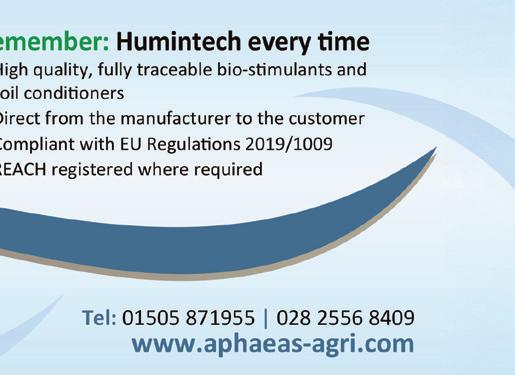
More than 10,000 visitors attended last month’s Groundswell 2025 event, held on 1-3 July at Lannock Farm, near Hitchin, Hertfordshire.
The sell-out regenerative agriculture festival included over 400 speakers from around the world – among them Prince William and the American “godfather of regenerative agriculture” Gabe Brown.
Visitors heard hearing from handson practitioners about a raft of topics – including mob grazing, birdlife, hedgerow biodiversity, no-till potato growing and a magical foray into a soundscape of soil acoustics in the farm’s woodland.
Content centred on principles of regenerative agriculture – minimising soil disturbance, keeping the soil surface covered, maintaining living roots, maximising crop diversity, reintroducing livestock to the farm.
‘Dirt to Soil’
Keynote speaker Gabe Brown, the American author of the world-famous Dirt to Soil book, shared his journey from conventional to regenerative agriculture, emphasising the importance of mimicking nature.
He highlighted the significant improvements made to his 2,400ha farm, including increasing soil organic matter, reducing erosion, and growing higher yielding crops without synthetic inputs since 2007.
Praising the spirit of the regenerative community he said: “When we regenerate soils, we regenerate people, communities and natural ecosystems. That’s the kind of thinking that we need to scale.
“It’s so exciting to be here at Groundwell and see so many people want to take on this challenge. When we go home and look in the mirror, we have to realise that challenge starts with each and every one of us.
Clockwide from top right: Prince William addresses Groundswell visitors, Groundswell director Alex Cherry, and Gabe Brown




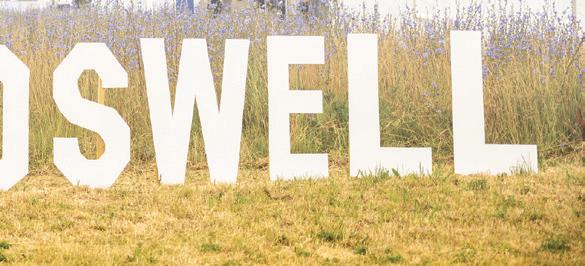
























• Improved nutrient use efficiency • Creates the ideal conditions for soil microbes to thrive • Calcium enhances soil structure and root development
to our expert team about LimeX Customer service 0800 090 2376





as it increases the spray application window and holds the herbicides where they are needed for as long as possible.”




When it comes to pre-emergence herbicides, you need a proven back-up. BackRow Max ensures consistent, long-lasting weed control in all conditions. Its advanced formulation boosts herbicide performance for a thriving crop and peace of mind.

BackRow Max

Peter Cartwright, Farm Manager, Revesby Estate, Boston, Lincolnshire

STRENGTHEN YOUR PRE-EM PROGRAMME WITH BACKROW MAX®







“That’s the kind of thinking that we need to scale, not more bureaucratic compliance checklists and subsidies.”
Event director Alex Cherry said:
“It’s been a monumental few days. We are very proud of the whole team for delivering a successful event that brings together thousands of people with a shared mission of building a healthier farming and food system.
“It was incredibly heartening for all of us who have been involved in regenerative farming for many years now to hear Prince William affirming its importance, and making the connections between farming, food and health.
“It feels clear that regen ag is now in the mainstream. Amid the many challenges facing the sector, Groundswell is a wonderfully positive atmosphere, and many people leave the event invigorated with a sense of optimism for the months to come.”





for

buildings with narrow access doors and passageways from 2m wide vertical rotor to left, right and front. 0.5m wide, up to 8m throw chopping, lowers dust levels, saves straw any bale in under one minute Self-loading, requires only one tractor / loader efficiency, profitability and environment
•
•
•


The ST (Side Throw) new head option for Micro, Mini, Midi, Midi XL and Maxi
• For buildings with narrow access doors and passageways from 2m wide
• One vertical rotor
• Spreading to left, right and front. 0.5m wide, up to 8m throw
saves straw
• Spreads any bale in under one minute
• No chopping, lowers dust levels, saves straw
• Spreads any bale in under one minute
• Self-loading, requires only one tractor / loader
• Self-loading, requires only one tractor / loader
• Improves efficiency, profitability and environment
• Improves efficiency, profitability and environment
M: 07904 899289 - Dave Bull
T: 01244 394258 - Office
E: sales@spread-a-bale.com
VISIT OUR WEBSITE
W: www.spread-a-bale.com








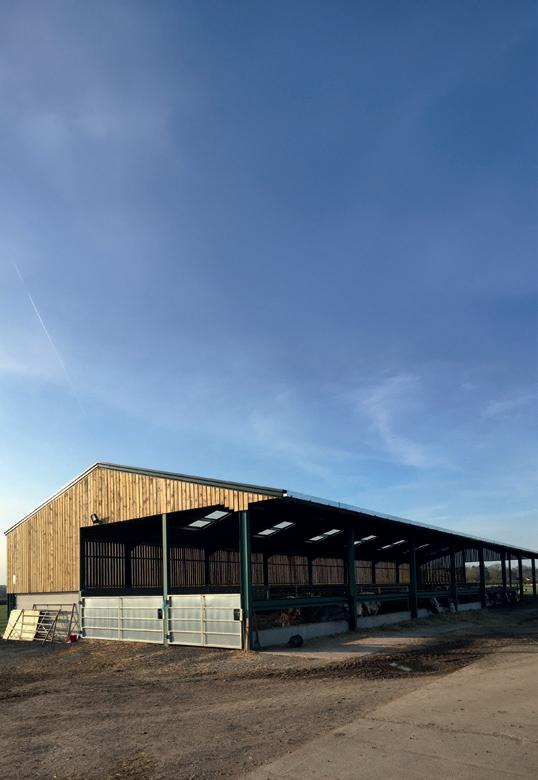


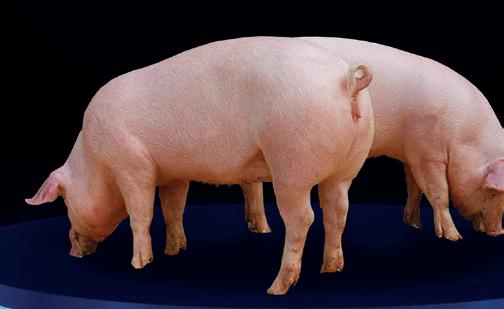

• Good showing for dairy farmers
• Growing momentum for organic
• Big range in performance levels
The last milk year was positive for dairy producers, with continued improvements in cow health and growing momentum in the organic milk sector, according to the latest annual report from Kingshay Dairy Costings.
Although the dreadful weather over the summer of 2024 saw yields from forage drop sharply, the reasonably high milk price and lower feed costs meant margins remained firm.
In fact, given the most favourable milk price: feed price ratio since 2001, the average margin over purchased feed was the strongest for a very long time – the only exception being the spike in milk prices during 2022.
“When it comes to margin over purchased feed (MOPF), we are still seeing large ranges, even within the same production systems, where groups of herds have similar goals,” says Kingshay farm services specialist Emma Puddy.
Performance range
“Housing-focused, all-year-round calving herds had the highest MOPF per cow at £2,937/cow, and the highest was achieved by the low to moderateyielding organic herds at 41.15ppl.”
We are still seeing large ranges
That said, data from 1,064 conventional herds and 98 organic herds, suggests a wide variation between the top and bottom quartile within each production system.
Organic herds made a strong showing years, with the milk price

The report highlights a wide range of performance between farms
EmmaPuddy–a better year for dairy farmers
March 2025. Milk from forage remains a key strength, with 44% of milk derived from forage compared to below 30% for conventional producers.
“It seems milk from forage is still
industry, based on its own trials and investigations.
Given the higher milk prices, the cost of poor health and fertility increased, both on a per-case and per-herd basis. All reported health indicators saw year-on-year improvements.

Mastitis dropped to 24 cases per 100 cows (down by two), and lameness declined from 37 to 34 cases per 100 cows. But fertility saw a bit of a slide –most likely due to poor-quality forage caused by challenging weather.
Calving intervals extended by a day to 394 days, and days to first service crept up by two days to 72. The age of cows at exit is steadily declining, but the proportion of selected versus forced culls has increased again.
“The best way for a farm business to see where they are successful and where they could improve is by putting their figures side-by-side with other producers in similar systems,” says
“We hope that by publishing this report we can help farmers to do exactly that, and to find ways to continue the positive trends.”
The full report can be downloaded at www.kingshay.co.uk.
Hatchery managers are being encouraged to carry out regular hygiene audits to support their biosecurity protocols.
Hatcheries present unique hygiene challenges compared to other farm settings, operating more like food factories which require significantly higher cleanliness standards, says Rob Hallewell, hatchery hygiene expert at Kersia UK.
“Hatcheries operate on a unique principle where you start with a relatively clean product – the egg –which then hatches and produces all the waste that comes with a living, breathing animal,” he explains.
“This is why the focus on cleanliness is so critical, particularly in areas like transfer, hatching, and processing.”
Bacterial pathogens and AI must not gain a foothold inside a hatchery, says Mr Hallewell. Regular hygiene audits are essential for maintaining effective pathogen control and biosecurity in these settings.
“This includes checking the quality of cleaning in areas that have already been cleaned, conducting microbiological testing through total viable count (TVC) swabbing in both clean and dirty areas.”
Producers should verify that products are being applied at the correct strength through titration
checks, adds Mr Hallewell. With heightened AI concerns, hatcheries in affected areas are implementing more stringent disinfection protocols.”When a hatchery is located in an AI zone, they must demonstrate that they meet certain standards of biosecurity set out by Defra and APHA so they can continue to operate.
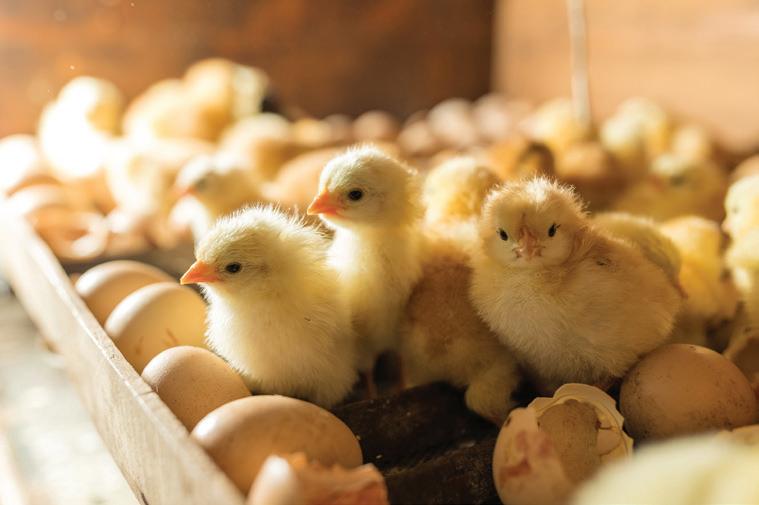
As part of this designation process, disinfectants will be increased to a general orders rate for application. These are higher than standard rates and are specified by Defra, who also independently test disinfectants for efficacy.
Basic biosecurity measures recommended for all hatcheries include control of vehicle and personnel movements onto site, disinfectant application to wheels and footwear at all points of entry.
Hatcheries present unique hygienechallenges
cleaning methods that can damage surfaces and provide additional harbourage for microorganisms.
Kersia UK hatchery hygiene expert Rob Hallewell
Understanding the nature of the debris and applying the correct hygiene products with the appropriate equipment will deliver the best results. A partner who can support with specialist technical advice is key.






Good door discipline, segregated clothing and hand washing protocols are important. It’s also important to have a robust hygiene regime including ‘clean as you go’ protocols, and to understand egg flow and airflow to prevent cross-contamination.



A managerial approach to cleaning is vital for successful disinfection and pathogen control, adds Mr Hallewell. Hatcheries should avoid aggressive

UK pig producers are being encouraged to strengthen contingency plans for African Swine Fever (ASF).
Organised by AHDB in partnership with Livetec Systems and the National Pig Association , a nationwide series of 25 special workshops is being held throughout 2025 to prepare producers for the rising threat of ASF.
“The threat of ASF is real,” says AHDB senior animal health and welfare scientist Miranda Poulson.
“When it strikes, it strikes hard. That’s why preparation is critical – not just for ASF, but for any notifiable disease like foot-and-mouth.”
Working alongside veterinary practices across England, the 25 face-to-face sessions are open to all producers. The aim is to help farmers collaborate with their vets to develop bespoke, farm-level contingency plans.
Paul Thompson, clinical director at Garth Vets, who
“It’s about cleaning sensibly rather than destructively, then applying appropriate disinfectants at the correct concentrations,” says Mr Hallewell.







Mr Hallewell acknowledges that aging fabrication presents a significant challenge for many hatcheries – with some older facilities creating pathogen hot spots, which can make cleaning challenging.



A well-trained team is the most important link. “Regular reviews of hatchery hygiene protocols with a specialist will ensure high standards of biosecurity are maintained.”



facilitated the first event, said the workshops would help producers identify clinical signs of disease, understand how ASF spreads, and formulate strategic farm-specific plans.
“Bringing together a diverse mix of producers, from small independents to larger farming operations, there’s something for everyone to take away from these workshops,” he says.
“So far, it seems one of the biggest eye-openers for many has been the importance of safeguarding personal property and homes from movement restrictions – highlighting the need for strategic boundary planning on farms.”
With funding provided through the AHDB levy, the sessions aim to build producer confidence and ensure a swift, coordinated response in the event of an outbreak.
For more details, visit: ahdb.org.uk/african-swine-fever


Proven efficacy: Demonstrated to help improve FCRs and prevent economic losses associated with ileitis in finishing pigs.1
Flexible administration: Intradermal or Intramuscular administration to suit your management practices. Convenient vaccine protocols: Can be given at the same time as other Porcilis vaccines, saving time and effort.**
Invest in the health of your herd with Porcilis Lawsonia and safeguard your profits against ileitis. Speak to your Vet or MSD Animal Health Account Manager to find out more.
March
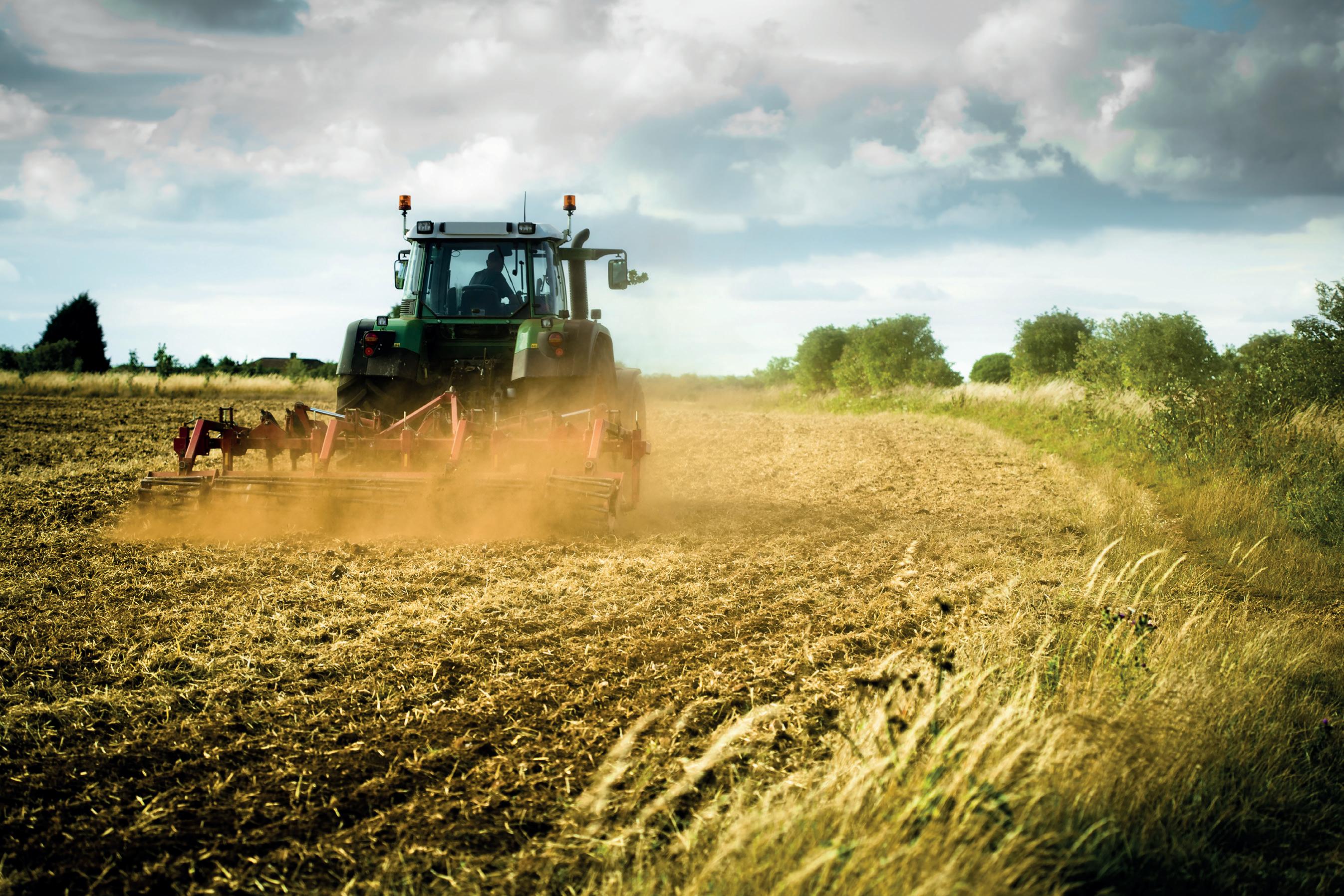
Farmer leader Tom Bradshaw has urged Keir Starmer to hold firm on poultry production standards when negotiating trade deals.
The NFU has written to the Prime Minister calling for the government to continue its balanced approach to trade and to protect UK standards as trade negotiations progress with the Gulf Cooperation Council.
The council imports approximately 85% of its food requirements. This presents opportunities for British farmers, particularly for products such as dairy, lamb and oats.
But there have been reports that the deal could include uncapped access to the UK’s poultry market for chicken meat. While reports suggest imports would have to meet UK hygiene standards, this rule wouldn’t extend to animal welfare.
Mr Bradshaw said Gulf Cooperation Council standards fell well short of those expected in the UK poultry sector. The

government should stand by pledges made by Sir Keir to protect Britain’s high production standards.
“Balanced and mutually beneficial trade deals can provide a real economic boost, including for farm businesses,” said Mr Bradshaw. “A modern trade deal with the council, if fair and balanced, could offer huge potential for agricultural exporters.
As always, striking the right balance would depend on the government upholding its commitments to deny greater market access for food imports which have been produced in ways that are illegal here.

This would undermine Britain’s reputation for high animal welfare standards that our producers deliver, and consumers value and rightly expec, said Mr Bradshaw.
“Our poultry sector produces to some of the highest standards in the world. This is vastly different to the council trading bloc which only seems to have basic welfare



the UK, says the NFU
provisions, which fall well short of the robust legislation in place in the UK.
“It’s vital the government takes the same balanced approach it took with the recent India and US trade agreements. This is the next test to see if the government will stand strong and protect the standards our country demands and values.”





Aplanning overhaul is needed to secure a better future for pig production, industry leaders have told the government.
The National Pig Association made the plea in response to Defra’s review of farming profitability. Other recommendations include a clampdown on disease risk, better trade agreements and easier access to labour.
The farm profitability review is being led by former NFU president Baroness Batters. She has promised to provide meaningful recommendations to government, food retailers, processors and manufacturers.”
Pig industry leaders say constraints within the planning system present a perennial challenge for the sectors. Their response to the review argues that planning is a key blocker to unlocking agricultural business potential.
“There needs to be an inherent understanding of the need for and importance of agricultural infrastructure in a viable and environmentally sensitive agricultural busi-
ness, and a mechanism to facilitate this.”
NPA recommendations include a revision of ammonia thresholds by which planning applications are screened according to, which are ‘extremely low and make proportionate agricultural expansion virtually impossible’.
The response also criticises the lack of consistency among local authorities when it comes planning approvals for indoor pig units. Applications are often delayed and/ or rejected due to various concerns including environmental impact, it says.
The NPA welcomes government assurances that UK food standards are a red line in trade negotiations. But it says differences in environmental and animal welfare standards during production must also be recognised. It also echoes NFU calls for a set of core production standards that would apply to both domestically produced and imported food sold in the UK. “Failure to do so would represent a
betrayal to British farmers,” it says.
The NPA warns that the UK remains poorly protected from biosecurity and disease threats, especially given the prevalence of African Swine Fever in parts of the EU; and the risk of foot and mouth disease, which has been active in Europe this year.
High volumes of illegally imported meat that continue to enter the country, says the NPA. It calls for better border controls for all meat imports and ensure there is sufficient resource available at major entry points including ports, such as Dover – especially from countries where ASF is rife, such as Romania.
Labour shortages across the pig industry have been an ongoing post Brexit challenge at a farm and abattoir level. While the use of overseas labour through the Skilled Visa route has been a feasible, albeit expensive, workaround, this looks set to stop.
Recently announced immigration rule changes suggest this route will be unworkable, says the NFU. Reforms remove a number of jobs from the scheme, including farmers, farm managers, butchers, and veterinary nurses, says the NPA.
Baroness Batters is expected to present her findings to the government in the coming months and the government will then respond.
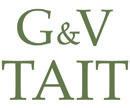
Launched in 2023, G&V Tait has become the leading firm of professional valuers and consultants dedicated to the pig industry. We deliver precise, impartial assessments backed by RICS quality standards
Launched in 2023, G&V Tait has become the leading firm of professional valuers and consultants dedicated to the pig industry. We deliver precise, impartial assessments backed by RICS quality standards
Launched in 2023, G&V Tait has become the leading firm of professional valuers and consultants dedicated to the pig industry. We deliver precise, impartial assessments backed by RICS quality standards
Launched in 2023, G&V Tait has become the leading firm of professional valuers and consultants dedicated to the pig industry. We deliver precise, impartial assessments backed by RICS quality standards
Launched in 2023, G&V Tait has become the leading firm of professional valuers and consultants dedicated to the pig industry. We deliver precise, impartial assessments backed by RICS quality standards
Launched in 2023, G&V Tait has become the leading firm of professional valuers and consultants dedicated to the pig industry. We deliver precise, impartial assessments backed by RICS quality standards
Pig farm valuations - sector-specific insight of over 15 farms to date
Pig farm valuations - sector-specific insight of over 15 farms to date
Launched in 2023, G&V Tait has become the leading firm of professional valuers and consultants dedicated to the pig industry. We deliver precise, impartial assessments backed by RICS quality standards
Pig farm valuations - sector-specific insight of over 15 farms to date
Pig farm valuations - sector-specific insight of over 15 farms to date
Equipment and livestock valuations - valuing over £16m in pig-related assets
Pig farm valuations - sector-specific insight of over 15 farms to date
Equipment and livestock valuations - valuing over £16m in pig-related assets
Pig farm valuations - sector-specific insight of over 15 farms to date
Equipment and livestock valuations - valuing over £16m in pig-related assets
Pig farm valuations - sector-specific insight of over 15 farms to date
Equipment and livestock valuations - valuing over £16m in pig-related assets
Used equipment brokerage - £70,000 in used equipment transacted to date
Equipment and livestock valuations - valuing over £16m in pig-related assets
Used equipment brokerage - £70,000 in used equipment transacted to date
Equipment and livestock valuations - valuing over £16m in pig-related assets
Used equipment brokerage - £70,000 in used equipment transacted to date
Equipment and livestock valuations - valuing over £16m in pig-related assets
Used equipment brokerage - £70,000 in used equipment transacted to date
On -farm auctions - two retirement auctions successfully completed
Used equipment brokerage - £70,000 in used equipment transacted to date
Used equipment brokerage - £70,000 in used equipment transacted to date
On -farm auctions - two retirement auctions successfully completed

On -farm auctions - two retirement auctions successfully completed
Used equipment brokerage - £70,000 in used equipment transacted to date
On -farm auctions - two retirement auctions successfully completed
On -farm auctions - two retirement auctions successfully completed
Whether you're buying, selling, or managing your pig farming assets, G&V Tait is here to provide the expert support you need.
On -farm auctions - two retirement auctions successfully completed
Whether you're buying, selling, or managing your pig farming assets, G&V Tait is here to provide the expert support you need.
On -farm auctions - two retirement auctions successfully completed
Whether you're buying, selling, or managing your pig farming assets, G&V Tait is here to provide the expert support you need.
Whether you're buying, selling, or managing your pig farming assets, G&V Tait is here to provide the expert support you need.
Whether you're buying, selling, or managing your pig farming assets, G&V Tait is here to provide the expert support you need.
Contact us today to discuss the requirements of your pig farming business.




Whether you're buying, selling, or managing your pig farming assets, G&V Tait is here to provide the expert support you need.
Contact us today to discuss the requirements of your pig farming business.
Contact us today to discuss the requirements of your pig farming business.
Whether you're buying, selling, or managing your pig farming assets, G&V Tait is here to provide the expert support you need.
Tel: 07900 605349
Tel: 07900 605349
Contact us today to discuss the requirements of your pig farming business.
Email: info@gandvtait.com
Contact us today to discuss the requirements of your pig farming business.
Tel: 07900 605349
Website: www.gandvtait.com
Email: info@gandvtait.com
Tel: 07900 605349
Contact us today to discuss the requirements of your pig farming business.
Website: www.gandvtait.com
Email: info@gandvtait.com
Tel: 07900 605349

Contact us today to discuss the requirements of your pig farming business.

Website: www.gandvtait.com
Email: info@gandvtait.com
Tel: 07900 605349
Website: www.gandvtait.com
Email: info@gandvtait.com
Tel: 07900 605349
Website: www.gandvtait.com
Email: info@gandvtait.com
Website: www.gandvtait.com
Email: info@gandvtait.com Website: www.gandvtait.com
It’s hard to believe for some people, but the decisions you make about weaning in 2025 can directly influence your 2026 lamb crop, writes Nerys Wright.
While much attention is rightly given to preparing ewes for tupping, research shows that their body condition score (BCS) and liveweight at weaning have a lasting impact—not just on scanning results, but also on the weight of lambs at weaning 12 months later.
As we navigate a dry summer, it may be tempting to delay weaning due to limited grass availability. However, timely weaning—ideally around 12 weeks of age—is essential for both ewe recovery and lamb performance.
By this stage, lambs are consuming very little milk and
rely more on grazing or hard feed. Ewes and lambs begin to compete directly for the same dry matter intake, which can limit lamb growth and prevent ewes from regaining the condition they need ahead of breeding.

Weaning allows ewes to rebuild condition without the demands of lactation—especially important when forage is scarce. Thin ewes need every opportunity to recover before tupping, as poor condition can negatively affect fertility and scanning percentages.
On good grazing, it typically takes 6–8 weeks to gain one unit of BCS, so giving ewes this time is vital to ensure they’re in optimal shape for breeding. It also opens the door to more targeted lamb management. Once separated, lambs can be grouped by weight and fed accordingly to maintain growth rates, even under challenging grazing conditions.
While early weaning in a dry year might feel counterintuitive, it’s a

Timely eaning is essential for ewe recovery.
strategic move that protects ewe condition, supports lamb growth, and lays the foundation for a productive breeding season and a strong lamb crop next year.
Top Tip: Wean lambs by 12 weeks and monitor ewe BCS closely. Prioritise thinner ewes for better grazing or supplementary feed. If ewes aren’t gaining at least half a BCS unit after 3-4 weeks, consult your vet or advisor to rule out underlying health issues.
Nerys Wright is an independent sheep consultant. For more details, call 07891 187643 or visit sheepconsultancy.co.uk.



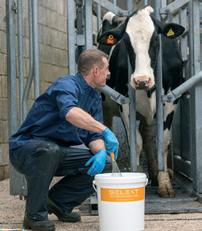
• Help sick cows recover quickly
• Reduce the risk of disease in early lactation
Visit Stand H208 at UK Dairy Day 2025 on Wednesday 10th September to find out how SELEKT can help your cows. Using your SELEKT Pump-Drencher you can:
Nimrod Veterinary Products Ltd
2 Wychwood Court, Moreton-in-Marsh, Gloucestershire, GL56 0JQ, UK
T +44 1608 652593 E nimrod@nimrodvet.co.uk www.selektsystem.co.uk
SELEKT® is a registered Trade Mark of Nimrod Veterinary Products Ltd.









• Thousands of visitors expected to attend
• Showcase of best British dairy sector
• Exhibitors from UK and overseas
Final touches are being put to this year’s UK Dairy Day event, which takes place next month at the International Centre, Telford, Shropshire.
The dedicated annual event for the dairy industry on 10 September brings together all facets of the industry for face-to-face networking – alongside a showcase of some of the UK’s best dairy cattle breeds.
A Sharing Knowledge Zone will feature seminars and industry panels cover a range of topics related to dairy herds and farm businesses. A careers board will showcase job vacancies and the details of individuals looking for work.
Seminar topics will include the latest updates on tax changes and planning options for farmers and landowners; with a special focus on sustainability, data and people during the morning sessions.
Good practice
Taking place throughout the day, AHDB and Shropshire Farm Vets will demonstrate how lung scanning can help dairy farmers assess lung damage caused by pneumonia – and
understand its impact as calves transition into the milking herd.
Carolyn Baguley and the team from Scarsdale Vets will present their innovative calf painting demonstration to highlight ways that good management practice can enhance animal health and welfare.
It's a global platform for UK breeders
Tim Carter will give a practical demonstration on foot trimming, blocking and knife sharpening. Demonstrations will take place throughout the day and streamed to a large TV screen with live commentary.
Some 300 businesses are expected to attend the event from the UK and further afield. Thousands of visitors are expected to attend the show – with six different breeds judged in the main ring. Judges for this year’s keenly fought cattle classes have now been announced.
Top cattle show judges for Ayrshire, Brown Swiss, Dairy Shorthorn, Guernsey and Jersey will cast their professional eyes
over the breeds under the spotlights during a full day of cattle classes.
Ayrshire and Guernsey judge Peter Berresford runs the 140-cow Heydale Ayrshire herd 1,000 feet up in the Derbyshire Peak District. He has judged at most major shows in the UK and his herd has had five AllBritain winners and numerous show winners.
Brown Swiss Judge Andrew Cope, of the Huddlesford herd in Staffordshire, is on the Brown Swiss, Holstein UK and EHRC judging panels. He has won Champion Holstein three times at the Royal Show and four times at the Dairy Events
Dairy Shorthorn Judge Kylie Preisinger grew up with Milking Shorthorns in Vermont, USA. She is the fourth generation involved with the Green Acres prefix and served as a director for 12 years for the American Milking Shorthorn Society.
Jersey Judge Hefyn Wilson farms at Tregibby Farm in Cardigan, where he milks 90 Holsteins and Jerseys, along with 140 Youngstock. Hefyn is a member of the Jersey UK and Holstein UK National judging panels and the EHRC judging panel.
The judge for the National Holstein Show is David Hodgson, of Wormanby Holsteins, Cumbria. Classes will run throughout the day and be livestreamed to a worldwide audience to watch the winners tapped out by judges in the main ring.
For full details, including tickets, visit www.ukdairyday.co.uk
•
•


















The Genesis Centre Birchwood, Warrington Cheshire WA3 7BH
www.ctlining.co.uk info@ctlining.co.uk 01925 810 280




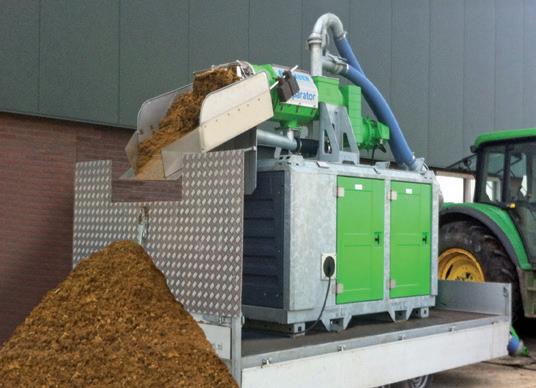
•
Biogas
• Distilleries Adrian Tindall 07708 919597




An innovative camera and AI system is helping dairy farm ers improve productivity and cow health.
The system uses a camera fitted to the parlour or race, allowing a bird’seye view of the cows as they pass underneath. It assesses mobility and body condition score (BCS), which the farmer can view on a desktop or app.
The HerdVision system is available exclusively through Wynnstay, whose specialists then advise farmers on the best way to improve their business productivity by addressing any issues within the herd.
“This partnership brings the benefits of early identification of problem cows alongside support from Wynnstay’s specialists, nutritionists and range of products – ensuring that any problems are quickly addressed,” says HerdVision chief executive Matt Dobbs.

“Wynnstay’s superior knowledge of dairy farming, range of expertise and wide product portfolio made them logical partners to bring the benefits of vision technology to UK dairy farming.”
Having the data and information is great, but what is more important is for farmers to utilise it in the best
investment, says Mr Dobbs. Lameness is one example where the partnership can make a difference. With data from the HerdVision reports, and working alongside the farm’s foot trim-mer, Wynnstay says it can identify problem areas which may be causing issues like sole bruising or white line disease.
Research suggests lameness can cost as much as £330 per cow. Savings using Herdvision could be significant, particularly considering the cost an accredited mo-bility scorer, explains
'Don’t let drought leave a dirty legacy'
Farmers are being urged to test wa-
issues within the herd, says David Jones
Contamination risks increase significantly during and after drought, says Mr Whittingham. “When rain eventually arrives, it can wash accumulated contaminants such as E. coli, Salmonella or Cryptosporidium into water systems.”
As you can’t see pathogens, it’s easy to assume the water is safe, says Mr Whittingham. But water should be tested every six months, and ideally more often in
“For nutritionists, this will provide vital data on BCS changes throughout lactation – allowing for valuable insights into the transition period and its success, along with information on potential overfeeding or underfeeding.
“Mobility issues are one of the main reasons for cows to leave the herd early so this will also improve cow longevity and sustainability. Once set up, the farmer has the benefit of a wealth of knowledge and expertise.”
The system costs £5,900 with a free subscription for the first year. HerdVision is eligible for the Farming Equipment and Technology Fund.
Stagnant water in troughs can harbour harmful microbes and encourage algae. Shrinking water levels in boreholes or watercourses can allow surface run-off and manure to enter the system.
“Clean water is just as important as providing high quality feed, with lactating cows consuming over 100 litres a day. Any drop in intake or water hygiene can impact milk yield, fertility and introduce disease.”
Multiple points

Mr Whittingham says farmers should sample water from multiple points, checking for microbial and mineral imbalances, and treating where needed – including by UV filtration, chemical dosing, or improved trough hygiene routines.
“Some farms benefit from low-level continuous treatment, others need emergency interventions when issues arise. Don’t let drought leave a dirty legacy.
Preventative testing and biosecurity protocols will protect both the herd and your bottom line. We recommend working with a trusted supplier or vet to interpret test results and develop a treatment plan.”
• Big implications for UK growers
• Challenge for seasonal workers
• Cost of recruitment could soar
Requiring growers to cover all costs associated with seasonal workers under the Seasonal Worker Scheme would pose a huge challenge, says the NFU.
The warning follows a review into the Employer Pays Principle – the idea that no worker should pay for a job, with the costs of recruitment instead borne by the employer, rather than the employee.
The NFU said any additional costs that could be passed up the supply chain would put significant financial pressure on growers. Many growers operate on profit margins as low as 2%, it said.
Implementing EPP could force
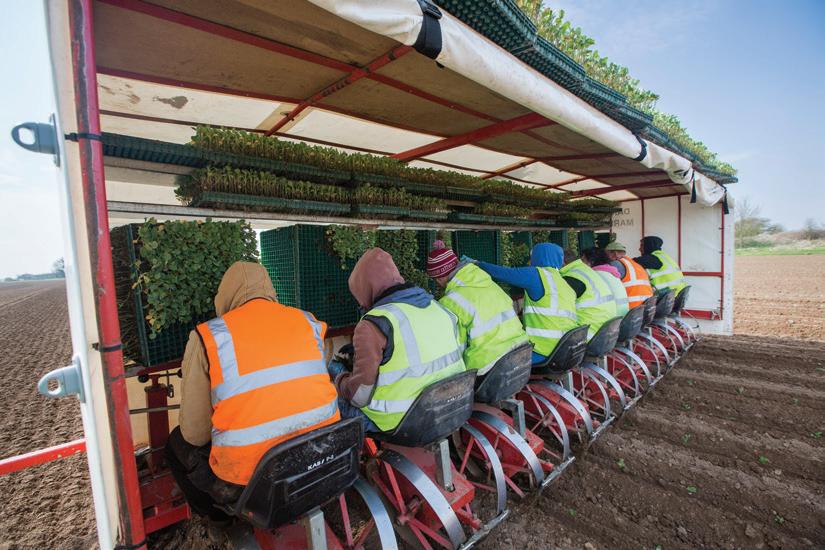
some growers out of business, said the NFU. While some growers may be able to pass on some extra costs, they would still face serious losses, potential closures, job cuts and reduced production.
Vital role
NFU horticulture and potatoes board chair Martin Emmett said: “Seasonal workers play a vital role in
Half of all seasonal workers coming to the UK pay for their own travel – despite increasing pressure for employers to foot the bill.
A Defra survey polled more than 14,000 seasonal workers in the three months to March 2025. Nearly all respondents (94.4%) said they paid for their visa, while 56.7% of respondents reported paying for travel costs to the UK.
Aside from these costs, a small proportion of respondents also stated they incurred other pre-arrival costs, the most reported of these being migration or labour ministry fees (13.3%).
Most respondents said they paid their costs from their own savings (59.1%), with 27.4% paying their costs through loans from family and friends. Almost all (96.2%) were provided with a contract in a language they could understand.
Similarly, most respondents considered the information provided to them during the recruitment process as accurate. This included information on accommodation costs, pay rates and contract length.
More than nine out of ten respondents (96.2%) said they were paid for all the work they performed, with 96.7% provided with at least an average of 32 hours of work per week, and 91.4% working in the UK for over 4 months.
Responses to the survey indicated that workers on the Seasonal Worker visa route were content with their working and living conditions while in the UK, with nine out of 10 happy about their accommodation, pay, operator support, and safety.
Apart from essentials – such as food and accommodation – the most frequently reported costs while in the UK were travel to the respondents’ first farm and then between farms (42.3%).
getting the nation’s favourite fresh fruit, vegetables and flowers onto supermarket shelves and without them the sector simply wouldn’t function.”
The review was jointly commissioned by Defra and the Seasonal Worker Taskforce. Mr Emmett said it confirmed what many growers had feared. “Expecting employers to cover all extra costs could seriously damage UK horticulture.”
“Most businesses already run on very tight margins, so this would push some over the edge. That is at odds with the government’s Food Strategy ambition to provide more easily accessible healthy food.”
Mr Emmett said there were some gaps in the study. The review had overlooked numerous issues, he added. The NFU wanted to agree any next steps with the taskforce without risking the future of UK farming.
“It didn’t look into the prevalence or scale of any possible worker debt. This is an important issue that requires further thought to determine the best way to address it while also safeguarding the future of UK horticulture and food security.
“Employers care deeply about worker welfare and are already working closely across the supply chain to improve experiences. This review is part of that ongoing effort, and we will work with the taskforce to carefully consider the findings.”
Employers must bear all recruitment costs – not workers, says the review
“
already run on tight margins



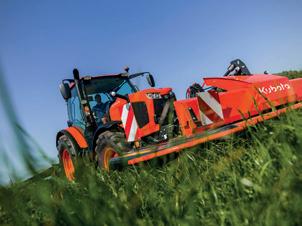






Much of my time over recent months has been spent thinking or writing about farming families and their struggle to keep their chins and bank balance above water.
With an ageing and declining farming population, we overlook the need to attract new entrants to farming at our peril. They are the life blood for the future of farming and we need to welcome them with open arms.
It is unusual for rank outsiders to join the farming world. Nearly all new entrants to farming come from established farming backgrounds – or have at least some link or connection with the industry.
As new generations of farmers arrive, some of these potential new entrants may
They are our life blood “

well be questioning whether the farming lifestyle is for them. It can be an extremely rewarding life – but it can also be isolating and is certainly not for everyone.
The phrase my family kept repeating during my early years was the well-worn refrain that farming is “not just a job, it is a way of life”. That may be so, but there are certainly easier ways of earning a living.
Non-farming people I speak to are amazed at the low rate of return from capital employed in farming. It’s certainly possible to earn more money stacking shelves in a local supermarket with hours to suit than working a 15-hour day during busy times.
It’s similar with youngsters with banking/ accountancy and media backgrounds. Many of them can earn considerably more money than new farming entrants can ever dream of having.
I have no doubt that the TV series Clarkson’s Farm has had a huge impact in attracting youngsters into agriculture. It has also played a big part in breaking down the stereotypical view of farmers as strawchewing yokels leaning on a farm gate.
It’s a high-tech sector – whether arable or livestock production. And technology attracts younger people. Pushing buttons on
a tractor seat or helping agronomists control diseases in cereal crops will create perhaps more farm scientists than farm workers.
In the past, the government has played a role in attracting new entrants to farming whether from a young school age or direct funding. Unfortunately, this government as we know encourages the exact opposite.
Many are lucky enough to have a farming background will no doubt be asset-rich and cash-poor. And with the inheritance tax saga rumbling on, early tax advice will vital for most of us who want to keep the farm on.
Access to land remains the big challenge for people wanting to get into farming. There are no easy answers. But one solution could be to look “outside the box” to alternative business models.
Hydroponics, for example, is gaining ground and traditional methods of farming could come under pressure. Today’s generation face a battle to make food production profitable. Technology must help.


I have no doubt my generation had the best of the farming years in the 1980s and 1990s but failed to recognise this at the time. So good luck to all the new farmers out there. Aim to thrive, not just survive – and do make farming profitable, not just popular.
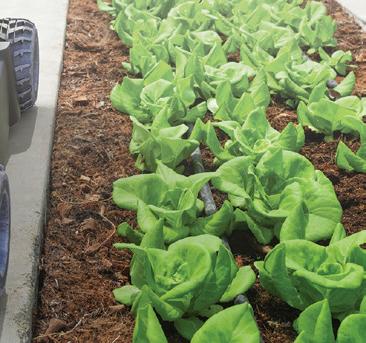
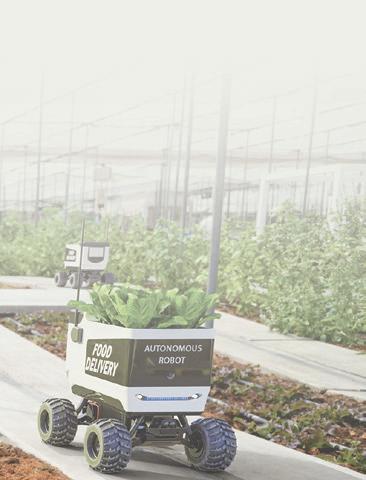
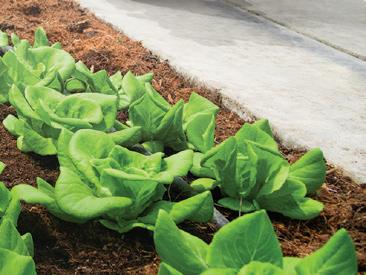

















Triton is now accepted as the goto direct and conventional drill for extending the drilling window in catchy conditions whilst increasing yields through deep soil release. The Triton uses the patented self cleaning side presses to close the seeded slot in all conditions. As one heavy soil farmer said ‘If the field will hold the tractor the Triton will drill’ The Triton gives the grower the ability to grow the most profitable crop sequence which is vital in the current climate.
Continuous Winter Wheat with occasional early drilled spring wheat for grass weed control is the most profitable simple low cost cropping solution.
Please call us to discuss why we are so sure of this ‘rotation’ and why the Triton is essential to getting the spring wheat tillering by mid March to ensure a yield more akin to to winter Wheat and less vulnerable to spring seed bed drought.




£22,000 +VAT

KVERNELAND 1875
G2 BROADCASTER
1875l Hopper, 3x Hopper Extension, Foldable Side Step, Mudguards, C/W Spreader Control
£21,650 +VAT
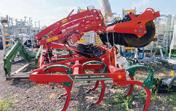



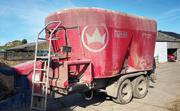
+VAT








